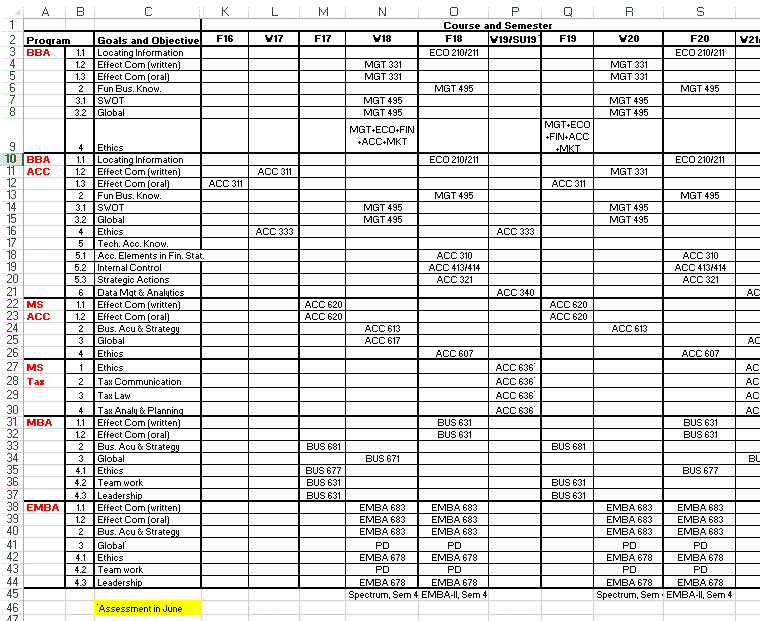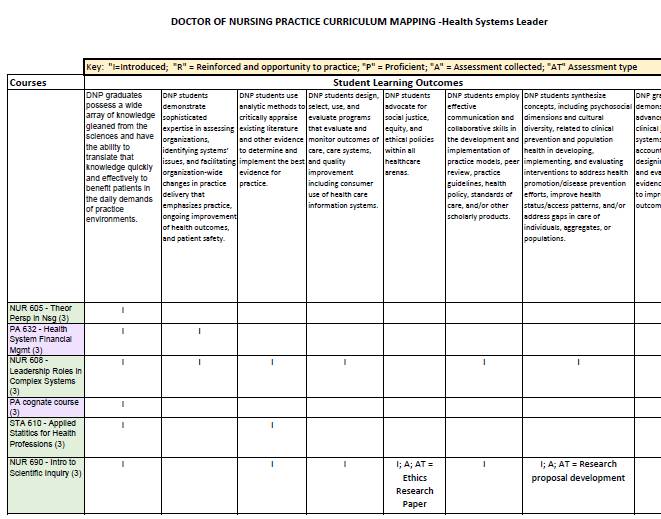Resources and Support
Writing S.M.A.R.T. SLOs and SCOs
When writing Student Learning and Student-Centered Outcomes, make them S.M.A.R.T.
- Specific - state who the students are and what program or service they are involved in.
- Measurable - explain how success will be measured. Think about tools--rubrics? tests? surveys? pre-post assessments?
- Actionable - use measurable verbs that fit the Outcome. Will students explain? speak? advocate? calculate? compare? plan?
The Citadel Center for Excellence and Innovation in Teaching, Learning, and Distance Education has a comprehensive list of Action Verbs for Outcomes, linked here.
The UAC Measures Grab Bag, linked here, has suggestions for measurement tools. - Relevant - connect to program, college, division, university goals.
- Timebound - when will assessment happen.
Single Outcome Examples of Assessment Plans for Academic and Service Units
Academic Unit Assessment Plan Example
XYZ Major
SLO 1: Students graduating with a degree in XYZ will accurately and clearly communicate XYZ concepts orally.
|
F24 |
W25 |
F25 |
W26 |
|---|---|---|---|
|
XYZ 202 |
XYZ 202 |
||
|
XYZ 401 |
XYZ 401 |
XYZ 401 |
XYZ 401 |
|
XYZ 492 |
XYZ 492 |
NOTES: Unit will collect assessment data in XYZ 301 to monitor how reinforcements are working in an intermediate level course. Unit will use this assessment data internally, as formative assessment only. Unit has rubrics for each course, rubrics have common components so that growth can be demonstrated across the course sequence. Unit is discussing how presentations done outside of classes might be assessed, valuable as a High Impact Practice (HIP).
Service Unit Assessment Plan Example
ABC Program
SCO1: Students completing programs through ABC will better understand how DEF provides resources and support.
|
Beginning Fall 2024 |
Beginning Fall 2025 |
|---|---|
|
DEF workshops 1 DEF workshops 2 |
DEF workshops 1 DEF workshops 2 |
NOTES: Unit has pre- post- surveys to assess student understanding of DEF before and after participating in workshops. An annual reporting schedule will best allow the ABC program to collect and analyze data, based on the multiple times across the calendar year when DEF workshops are offered. Survey results from every DEF workshop will be collected and analyzed annually to look for trends and determine ways to improve support for students.
Assessment Resources
Compiled by UAC:
- Tools and examples
- Measures grab bag
- Excellence in assessment
- Principles and frameworks
- UAC reviewer rubrics << New!
- UAC policies
- Glossary of terms
Tip-sheets and Guides:
- GVAssess Tip-sheet (pdf)
- Writing Objectives Tip-sheet (pdf)
- Create a rubric (Berkeley)
- Examples of rubrics (Syracuse)
At GVSU:
- General Education at GVSU:
- GenEd Outcomes - Definitions & Rubrics
- DSS: Co-curricular Connections
- FTLC:
User Guides:
Templates - for offline planning (Under Revision)
Have a great assessment resource we can post here?
Looking for particular kind of resource? Let UAC know!
|
GVAssess Tip |
|---|
|
Manage your labels. Outcomes into GVAssess are displayed for the entire department to allow ‘sharing’ among the degree programs. Because Outcomes are sorted alphabetically by the "Student Outcome Label" in GVAssess, you can use prefix codes to keep related outcomes clustered together throughout the site. Example 1: Mathematics uses codes to group outcomes by program: Outcomes A, B, C, and D are general, but ELE-A, ELE-B, SEC-A, and SEC-B are unique to the elementary (ELE) and secondary (SEC) education emphases. Example 2: Movement Science uses codes to group by skill-type: Outcomes A-AT and A-SC relate to collaboration (A), while B-AT, B-CES, B-ES, and B-HFI all relate to critical thinking (B). |



